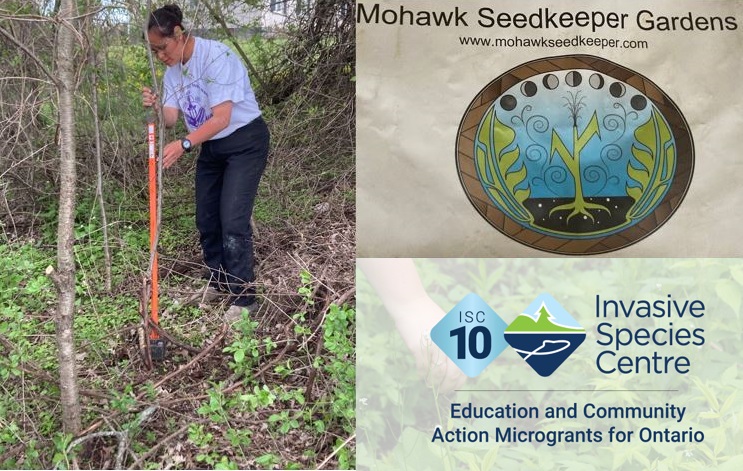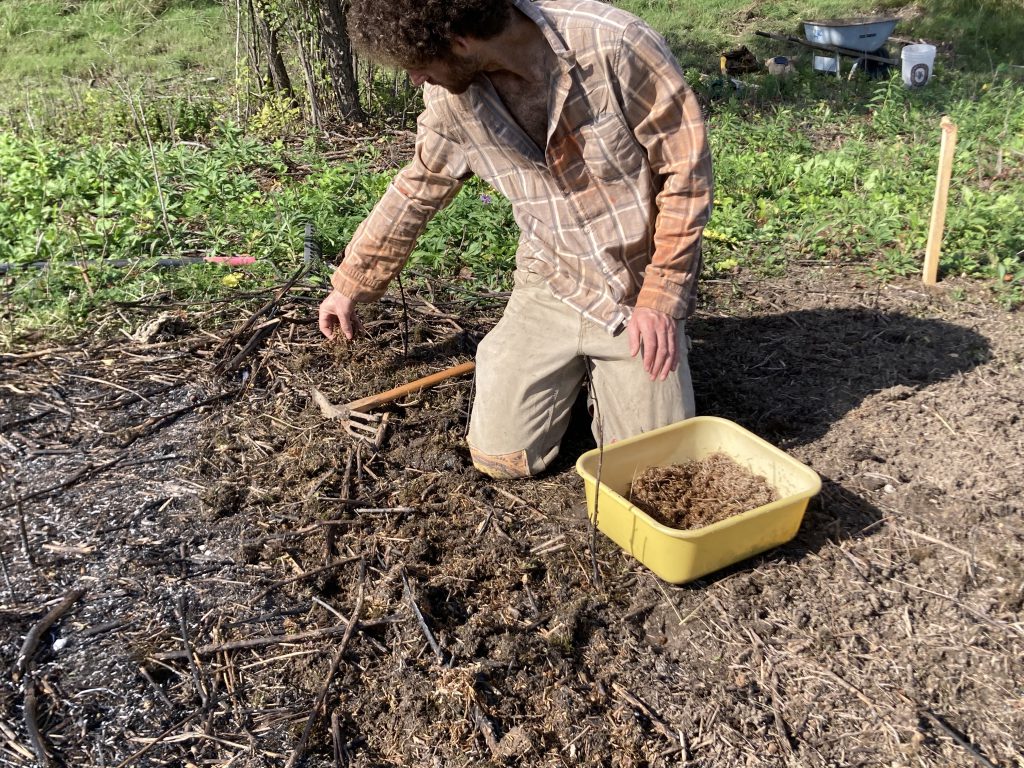
As part of the Invasive Species Centre’s 10-Year Anniversary, the Invasive Species Centre has awarded 24 microgrants of $1,000 each to support invasive species education and community action in Ontario. We’re featuring these projects throughout the year to help amplify the exciting microgrant project work being completed this year to support prevention and management of invasive species.
Current feature:
In 2021, Mohawk Seedkeepers launched The Indigenous Food Trees project at the Haudenosaunee Agricultural Ways Learning Centre. This project expanded their seed library and model gardens by replacing invasive plants such as buckthorn with indigenous food trees including as paw paw, smooth serviceberry, Canada elderberry and American hazelnuts.
Mohawk Seedkeeper Gardens is owned and operated by Terrylynn Brant, “Sera:sera” who is working to carry on the tradition of Indigenous gardening and seedkeeping. The project took place in the model gardens of the recently built Haudenosaunee Agricultural Ways Learning Centre. These model gardens allow the centre to grow, save and distribute culturally significant seeds such as corn, beans and squash. The food produced by Mowhawk Seedkeepers contributes to local food security within Six Nations of the Grand River and is regularly featured at Yawékon restaurant.
This project involved first the removal of invasive species through open field deforesting and tree girdling by volunteers for areas that were not accessible to deforesting equipment. The process was facilitated by the tagging of indigenous tree varieties prior to removal efforts. Volunteers and summer students also used hand extractor tools to remove invasive buckthorn. This invasive plant can stunt the growth of important Carolinian species, and its removal allowed the growth of species such as the newly planted paw paw trees and groundnut vines. Volunteers then planted indigenous grasses, flowers and trees. Some were even able to gather indigenous seeds from the fields around their homes to contribute to the planting.

The planted seeds will contribute to community food security, maintain biodiversity, and serve as a living example of ancestral land management. Land managed by Indigenous people is recognized to have increased levels of biodiversity. Haudenosaunee have always carried and planted seeds for their communities and this project will continue that ancestral lineage. The newly planted trees will ensure food security, maintain biodiversity and serve as a living educational example of ancestral land management. Increasing the diversity and resiliency of native tree communities will also help prevent invasive species from spreading. Furthermore, these trees do not only provide for humans but are also a food source for pollinators and birds.
Sharing the progress of the project on social media allowed for even further community reach, spreading awareness on how to identify and remove common buckthorn, what Indigenous trees can be planted in its place and the benefits that these species bring to both humans and the environment.
To learn more about all the recipients of the Education and Community Action Microgrant Awards for Ontario, visit our ISC 10 Microgrants webpage.
